Winter is a very challenging time for garden birds. Indeed, during this cold season, food becomes scarce: most insects are in a form of hibernation called "diapause," and fruits are no longer readily available. Winter frost and snow only worsen the situation! So if you want to help our feathered friends get through this tough period, there's nothing better than assisting them with food. Discover our illustrated step-by-step tutorial to create a lovely seed feeder for garden birds.
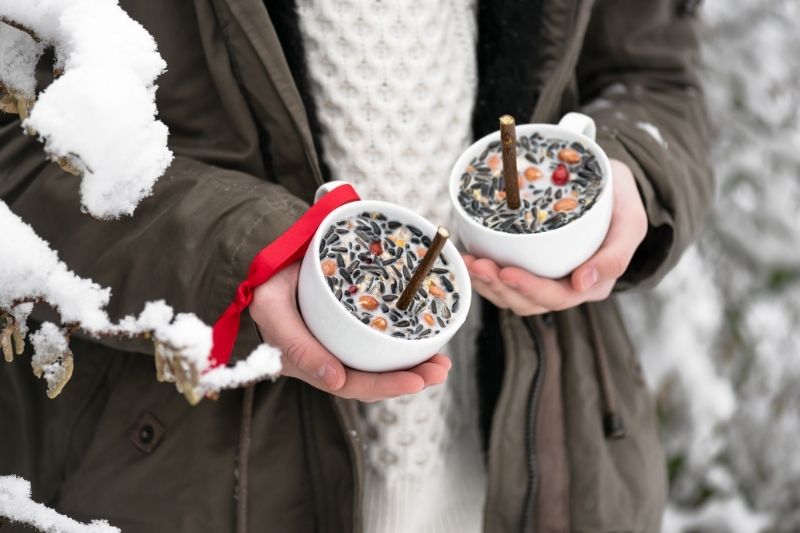
When should you feed garden birds?
Start feeding wild birds at the first signs of cold weather, around mid-November, and continue throughout winter until spring returns and insects reappear. Avoid stopping feeding abruptly during severe cold spells, as this could disrupt the birds and harm their survival. There’s no need to feed our feathered friends outside of winter and early spring. They will naturally feed on insects and help regulate their populations during the warmer months.
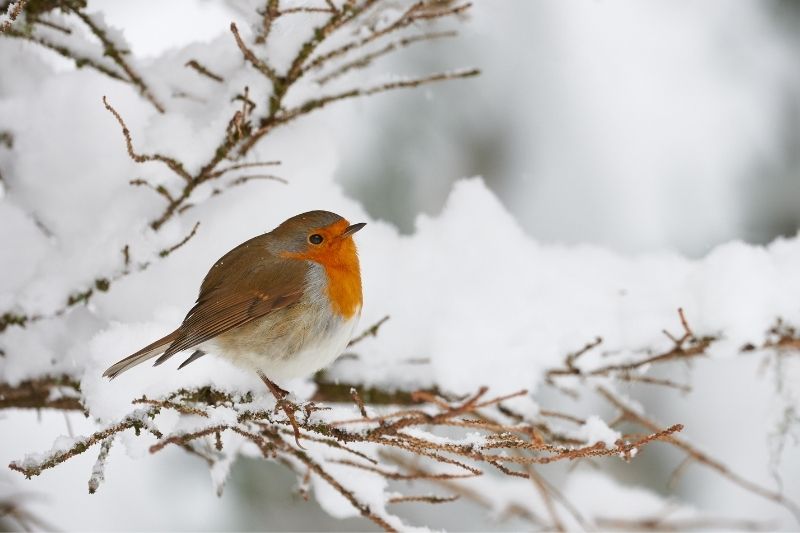
Handy tips and rules to follow
- Choose a bird seed mix as diverse as possible to cater to the widest range of species. You can add sunflower seeds and peanuts.
- You can also gather seasonal berries that birds love: hips, barberries, holly, and hawthorn.
- Avoid placing fat balls in nets to prevent birds from getting their feet stuck.
- Use only unsalted vegetable fat, such as margarine. Avoid animal fats like lard, which are harmful to birds.
- Don’t forget to provide a water dish. Tip: place a floating ball in the dish to prevent ice formation during frost.
- Check seeds regularly to avoid mould.
- Do not feed dry bread, rusks, or pastry leftovers, as these can swell in birds' stomachs and cause fatal blockages.
- Avoid salted seeds like salted peanuts.
How to make a bird seed feeder?
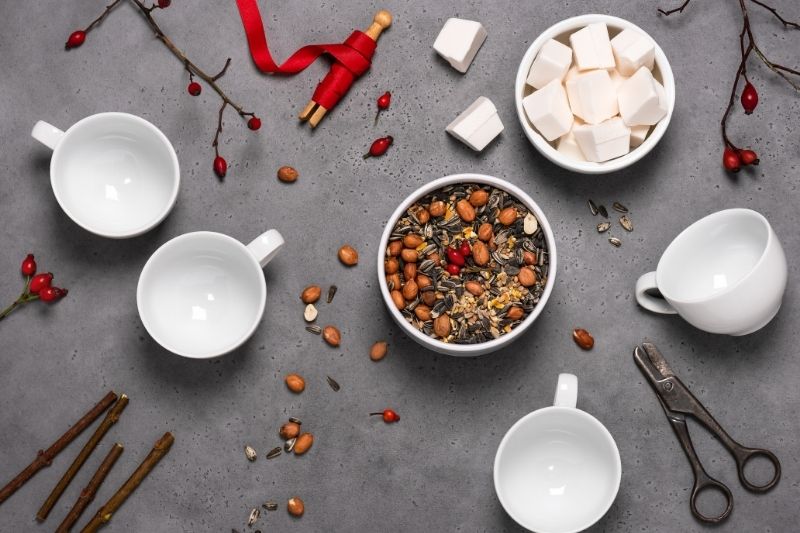
What you'll need:
- Unsalted vegetable margarine
- A container to melt the margarine
- A mix of bird seeds and small berries
- Hanging cups
- Small wooden sticks
- A teaspoon for mixing
- Facultative: ribbon or string
Tip: If you don’t have cups or Aunt Adélaïde’s china is too precious for the garden, you can use silicone moulds, a small tin can, empty yoghurt pots, cookie cutters, a camembert box, a bowl—use your imagination!
Step-by-step guide:
1- Fill your cups three-quarters full with the seed mix;
2- Melt the vegetable fat in a separate container;
3- Pour the liquid fat over the seeds in the cups;
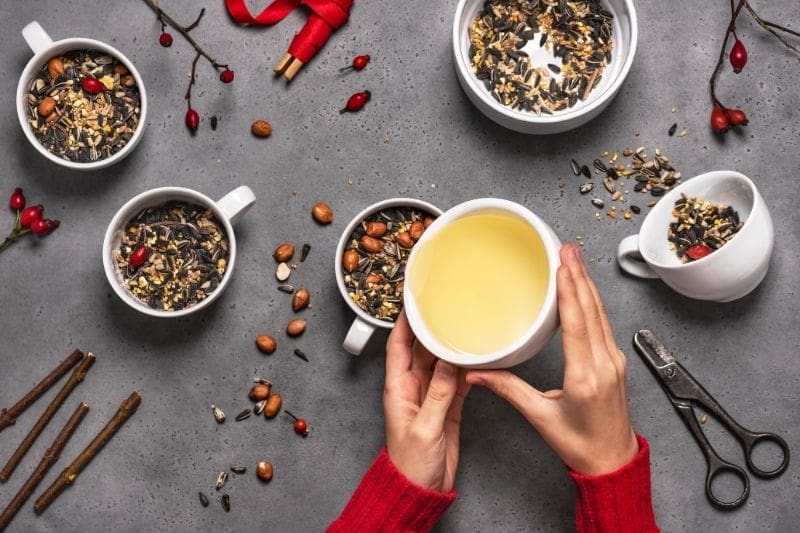
4- Mix well to coat all the seeds with fat;
5- Insert a small wooden stick at the base of the cup—this will serve as a perch for the birds;
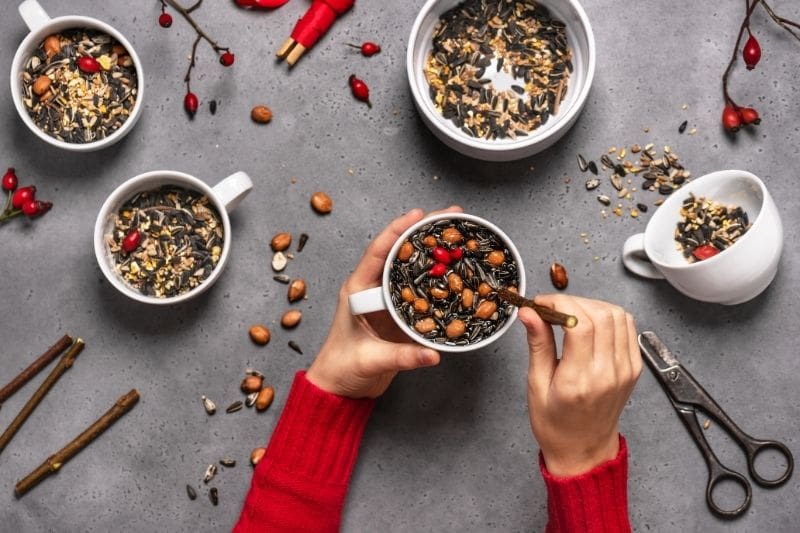
6- Place the cups in the fridge for at least 12 hours;
7- Facultative: tie a pretty ribbon to the cup handle for hanging or decoration.
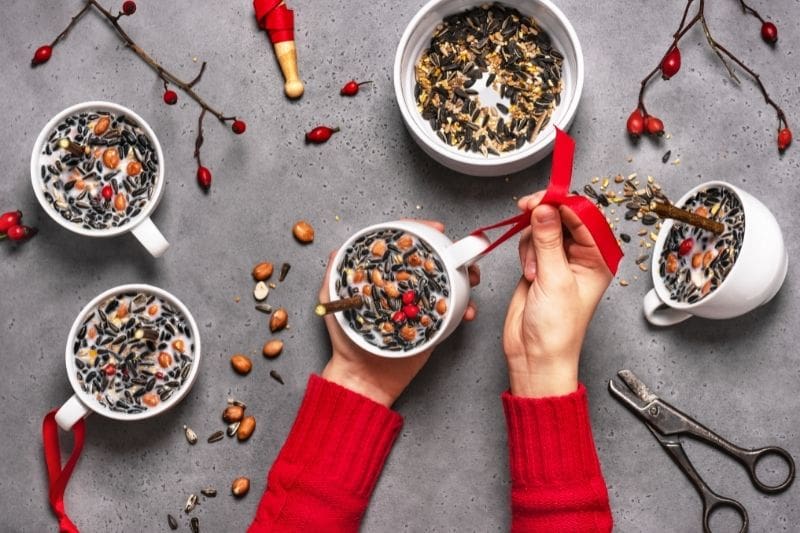
Where to place the feeders in the garden?
- Some species, like starlings, sparrows, robins, and thrushes, prefer feeding on the ground. Others, such as tits and finches, prefer hanging feeders. Place your seed cups both on the ground and on bush branches.
- Position feeders in visible spots to attract small birds.
- Set up multiple feeding points to avoid squabbles and allow shy birds to eat.
- Keep seeds out of reach of predators or in an open area.
- You can also place a feeder on a windowsill to observe wild birds with your family.
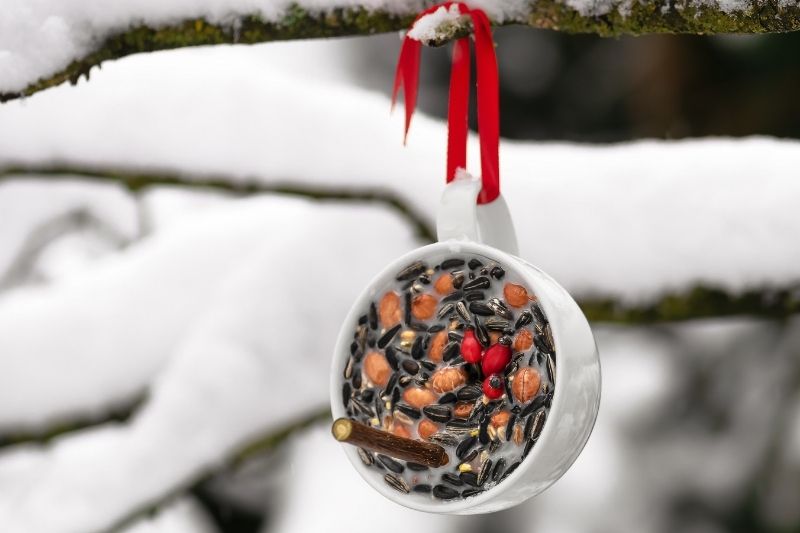
Further reading:
- Find more ideas for feeding garden birds in winter in Virginie’s article.
- Check out our tutorial on making an orange bird feeder.
- What do garden birds eat? Discover our tips to help them thrive.
- If, like Patrick, you want to attract feathered visitors, watch Olivier’s video: Birds in my garden
- Learn Olivier’s bird-feeding tips in this video:



































Comments